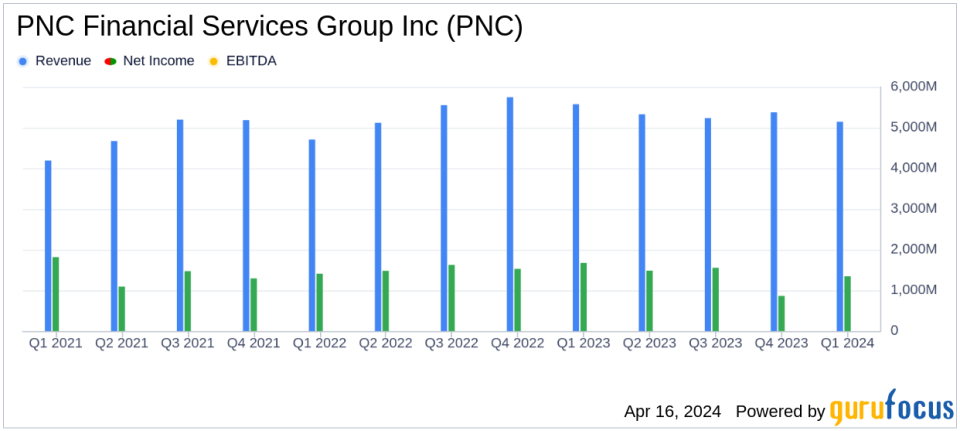
For centuries, few things have been more rooted in the physical world than healthcare. But with the rise of telehealth, telepresence systems, remote diagnostics, predictive AI, wellness apps, fitness trackers, and medical wearables, that is changing fast.
With AI-assisted drug discovery in the mix too, it’s clear that digital healthcare is both a burgeoning market and, potentially, a real patient benefit. One that could monitor individuals’ health and fitness proactively and present opportunities to manage both. In this way, data insights might slow or prevent the onset of some diseases, or help diagnose and treat them earlier – with better medicines.
There may be downsides to this promising market, however. For example, the risk of over-intrusion by advertisers and insurance companies into patients’ lives – even enforced wellness, perhaps, with some US insurers already insisting on fitness trackers for policyholders. Meanwhile, patients with long-term conditions might be penalized for being sick or having disabilities, when they already face bigger obstacles and costs than others.
Digital poverty and exclusion (such as among the seven to ten percent of citizens who are still offline in some developed economies, with much higher percentages elsewhere) would be another risk when essential services are digitized. According to Statista, 730 million people are offline in India alone this year, and nearly three billion globally: that’s over one-third of the world population.
And now another technology is on the horizon. Could the Metaverse (or, if you prefer, Metaverses, XR technologies, or the Multiverse) be a good fit for healthcare? Indeed, might it be the logical endpoint of that sector’s journey towards digital, AI-assisted, and virtual solutions? And would the same opportunities, risks, and downsides apply?
That was the topic for an event hosted by industry body techUK last week. Laura Foster, the organization’s head of tech innovation, noted:
We’ve looked at use cases from teaching to enhancing patient experiences. But with the emergence of the Metaverse and key characteristics focused on things like interoperability, seamless immersion between virtual experiences and real life, and its emphasis on connectivity, could it push forward those use cases into new areas?
Perhaps. But there would be challenges. Last month a separate techUK event looked at Metaverse applications in banking and finance. There, speakers identified a lack of interoperability, plus problems with identity, authentication, data privacy, security, and the private ownership of platforms as obstacles to progress.
In that context, what could the Metaverse offer citizens and healthcare professionals that would not open a Pandora’s box of new or unnecessary problems?
Richard Price is Global Health Education Technology Advisor for Health Education England, a strategic role within the Department for Health and Social Care that bridges the expertise of the NHS with that of partners, peers, and colleagues overseas, including the World Health Organization.
For Price, training and education will be the sweet spot for Metaverse applications – or rather, for XR technologies, including the immersive experiences delivered by augmented- and virtual-reality-based systems (AR and VR).
He said:
A lot of the work we do is in ‘lower middle-income’ countries where the Metaverse isn’t really talked about, but actually has a huge role to play in terms of how we deliver education and training.
The amount of healthcare knowledge doubles every 73 days. In the mid-80s and 90s, that figure was around every 40 years. So, how do healthcare professionals keep up when the pace of change is now so quick?
If you look at human adaptability from the dawn of time to the present day, we haven’t got any better at retaining knowledge – in fact, we’ve probably got worse. But technology is on this exponential curve upwards, and we have passed the point where we can keep up.
So, how do we strengthen our health systems and health workforce? We’ve been looking very much to the Metaverse to address some of those challenges.
Virtual realms and walled gardens
But what did Price mean by ‘The Metaverse’? Definitions vary. Thus, it risks becoming a vague, catch-all term for a group of different technologies – from augmented, mixed, and virtual reality to digital twins and more – at a time when Meta CEO Mark Zuckerberg would prefer us to associate it with his rebranded company.
To his credit, Price anticipated the criticism, while also referring to Neal Stephenson’s seminal novel Snow Crash (1992), which coined the term ‘Metaverse’ (meaning a VR-based successor to the Internet). And now the likes of techUK routinely attach it to speculative events.
He said:
I suspect Mark Zuckerberg’s vision and mine are very different metaphors. I like to think of the Metaverse […] as a loose coupling, a collection of different technology tools and networks, none of which really talk to each other.
But potentially they could, and that’s the exciting thing. How these different technologies might be able to communicate with each other, and how we might be able to use some of these VR and AR tools to improve the way we deliver both healthcare and healthcare education.
However, those ‘mights’ may be more an expression of hope than realism, given the likelihood that many virtual realms will be walled gardens owned by the likes of Meta, Alphabet, Apple (thought to be launching a mixed-reality headset soon), and Amazon.
And in some cases, they are likely to be driven by advertising or by covert relationships with private partners: models that might work better in some territories’ healthcare markets (the US) than in others (the UK).
So, the idea that all these different systems might one day seamlessly merge and interoperate – with citizens able to carry their protected personal data with them wherever they go – seems ambitious at best, and a pipedream at worst.
But Price continued:
For me the Metaverse is a bit like a spectrum. You’ve got the physical world on the left, and fully immersive virtual-reality experiences on the right, and everything in between is augmented and mixed reality. A spectrum and an extension of reality. The Metaverse is a space beyond the physical world.
Or a castle in the air, perhaps. That aside, what opportunities does it – or the spectrum of XR technologies, at least – offer today and in the future? Price said that, first of all, it’s about capturing scale. But with some caveats:
Health Education England is responsible for the development and education of all of the healthcare workforce. […] In all, we work with and train about three million people. So, it’s a big undertaking and our response has to be of suitable scale.
But if we’re talking about putting on a virtual reality headset, there’s the obvious [element of] physical safety. But more important than that, I think, are the psychological safety and privacy implications.
We talk about Meta being able to do eye-tracking, for example, in their Oculus headset. That has huge privacy implications, so how do we mitigate those challenges?
With psychological safety, we have a lot of post-traumatic stress issues, where people have lived experiences. If you put them into an experience that takes them out of their comfort zones, then you must provide appropriate support mechanisms.
Nurturing a new generation of talent
Unsurprisingly, one impetus for healthcare’s flirtation with XR technologies has been the pandemic. Not just for the obvious reasons – that people needed remote interaction plus the ability to keep training in lockdown – but also because staff found themselves in a care environment that was dominated by a single disease.
Price explained:
That was really the driver for adoption. One of the big challenges we had to address was the diversity of cases: staff were only seeing COVID patients. So how do you give those staff greater diversity? Well, XR was one solution for that.
And we talked about clinical placement capacity. You can’t become a doctor, nurse, or allied health professional without seeing patients. So, how do we increase capacity to give people access to clinical experiences? Again, XR was one solution to that, and it continues to be used.
In 2020, Health Education England worked with Imperial College and Microsoft’s HoloLens technology to coach clinicians in their own homes about treatments for a range of different conditions, using actors and virtual characters in 360-degree simulations.
The organization has carried out similar exercises with students all over the world. In a sense, such initiatives both ‘gamify’ health education and help trainees gain valuable clinical experience.
Sian Wilson is Executive Director at accessible training provider The Skills Network, which has supported about 1.6 million online learners in the UK to date. She also sees the Metaverse as offering a unique training opportunity for healthcare workers.
The company has recently partnered with immersive education provider Metaverse Learning to integrate AI and VR experiences into its training environment, starting with apprenticeships. She explained:
We’re looking at how to get a new generation of talent into healthcare – and one step ahead of where they need to be.
We did a generational divide report last year, which showed that when you’ve got Generation Z coming through, they’re opting for a more diverse approach to learning [than the generations before them]: they expect a blended approach, and to be using technology.
But what was interesting is that Baby Boomers who have maybe had a complete career change are also embracing tech-based training. So, we need to make sure that, when we’re bringing new talent into healthcare, we are not only supporting employers, but are also aware of how people want to learn – and what’s going to connect them with the sector.
Wilson explained that a unique feature of Metaverse- or XR-based training is the ability to practice and refine medical techniques in virtual settings, and thus build confidence safely without using real patients as guinea pigs.
For example, students might be able to interact with a virtual patient, answer multiple-choice questions, zoom in on a heart valve or a diseased organ, and call up in-depth data about what to ask a patient or tell them in each situation.
For Health Education England’s Price, another Metaverse advantage is training staff to work in environments where the NHS struggles to recruit:
[A key problem area is] prison nursing. There is a lot of fear associated with working in a prison. So, we created this 360-degree video that works on a laptop or a VR headset. And it’s no different really, from a traditional hospital setting, except for the bars in the window!
Look for the adjacent opportunities
However, none of these initiatives mean that the Metaverse could have similar applications in real-world patient care, such as when staff are treating people remotely: a model that, it seems to diginomica, might also significantly increase doctors’ and nurses’ workloads.
The Skills Network’s Wilson said:
If you’re looking at a rash on somebody’s arm, for example, the camera resolution may not be high enough to tell with any confidence what it is. Doctors might prefer to see images from a high-resolution camera, and then just have a telephone conversation.
So, I would use the technology with caution, because I’m not sure it would add much value in that space. I think there are other use cases in healthcare delivery, but perhaps not in primary care.
John Witt is the Californian co-founder and CEO of London-based software start-up Stotles, which helps businesses work better with the public sector. For him, the Metaverse is all about being ready for the next big commercial opportunity. He said:
When you consider the Gold Rush in the [mid 19th Century] US, we had people running from the East Coast and the Midwest to the West Coast to strike gold. But actually, the real winners were those who capitalized on adjacent opportunities, where they could create value as a frontier market was developing.
The winners were those who manufactured picks and shovels, or a company like Levi Strauss, which made the jeans that everyone wore. So, when you think about a frontier market, think about it holistically, and where you can fit into the opportunity beyond the obvious examples.
Studebaker, Wells Fargo, and others, also have roots in that period of American history. So, what might those opportunities be today? He said:
“The market movements we’re seeing now are in the underpinning nuts and bolts, the adjacencies, the complimentary services or technologies that build up to what the Metaverse could eventually be for.
Recently, we saw £500 million allocated to reduce patient discharge delays in an effort to free up hospital beds. That budget is really focused on freeing up hospital beds by exploring new remote-treatment technologies.
Second, all the integrated care systems have submitted plans for how they’re going to work towards NHS England’s ambition to create 40 to 50 virtual ward beds per 100,000 people by the end of this year. That’s supported by an investment of £450 million over two years.
Besides that, if you look at the number of patients in virtual wards at the moment, it’s around 10,000 people a month. The plan is to increase that by over 500%.
To the purists, these initiatives are ‘Metaverse’ in its purest sense. However, they require underlying technologies, services, and suppliers that might not be ‘Metaverse suppliers’, as such, but which do represent the initiatives and technologies that led us in that direction.
My take
An entertaining, informative discussion – one that, unusually for a Metaverse event, offered some incisive diagnosis rather than the usual bed-bath and flannel.
Source: diginomica.com





